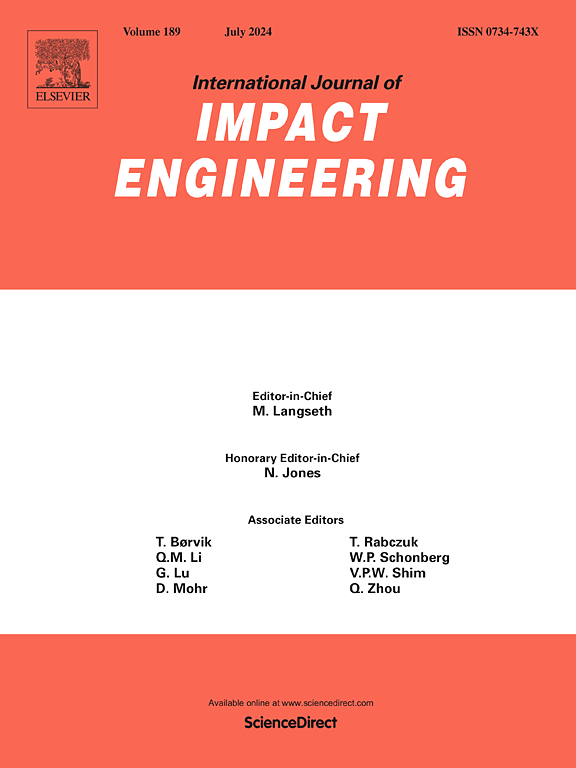Non-linear visco-hyperelastic model of ballistic gelatine – mathematical modelling, experiment, numerical simulations
IF 5.1
2区 工程技术
Q1 ENGINEERING, MECHANICAL
International Journal of Impact Engineering
Pub Date : 2025-01-12
DOI:10.1016/j.ijimpeng.2025.105225
引用次数: 0
Abstract
In the paper we formulated a new constitutive model for ballistic gelatine commonly used in shooting tests for military purposes. The model considers new effects that the gelatine reflects, i.e. non-linear viscoelasticity. The model was based on experimental tests including high-rate compression and stress relaxation tests. Our aim was to develop the mathematical modelling of ballistic gelatine and provide an easy-to-implement model to simulate ballistic tests. We implemented our constitutive equation to a finite element simulation of a bullet shooting through the gelatine block. The material constants were calibrated based on curve fitting method, i.e. we fitted the model to the experimental curves. The reliability of the constants values were confirmed by very good fitting and by validation of the model. The shooting simulation gave promising results which allowed us to observe realistic gelatine behaviour resulting from the bullet passage. The obtained results suggest that viscoelasticity plays an important role in the gelatine deformation and should be considered in mathematical modelling of its behaviour.
求助全文
约1分钟内获得全文
求助全文
来源期刊

International Journal of Impact Engineering
工程技术-工程:机械
CiteScore
8.70
自引率
13.70%
发文量
241
审稿时长
52 days
期刊介绍:
The International Journal of Impact Engineering, established in 1983 publishes original research findings related to the response of structures, components and materials subjected to impact, blast and high-rate loading. Areas relevant to the journal encompass the following general topics and those associated with them:
-Behaviour and failure of structures and materials under impact and blast loading
-Systems for protection and absorption of impact and blast loading
-Terminal ballistics
-Dynamic behaviour and failure of materials including plasticity and fracture
-Stress waves
-Structural crashworthiness
-High-rate mechanical and forming processes
-Impact, blast and high-rate loading/measurement techniques and their applications
 求助内容:
求助内容: 应助结果提醒方式:
应助结果提醒方式:


